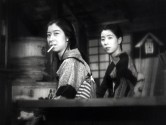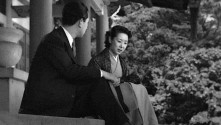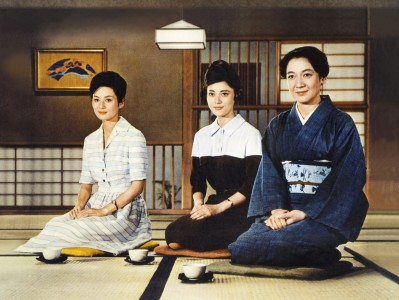
Both a Kinema Junpo first prize winner and Ozu’s first box office hit, The Brothers and Sisters of the Toda Family helped Ozu shed his reputation as a critics’ director and even earned him a raise at Shochiku. In spite of its mass appeal, the film is an encapsulation of the formal and thematic elements Ozu had been honing since the late 1920s. The Toda family patriarch dies on the night of his birthday, but nearly all of his wealth must go towards paying off his debts. The second brother Shojiro (Saburi Shin) moves to Tianjin, China—a semi-autobiographical element, as Ozu was drafted to China for two years after the release of What Did the Lady Forget?. In Shojiro’s absence, his siblings begrudgingly take in their widowed mother (Katsuragi Ayako) and youngest sister Setsuko (Takamine Mieko). Though it shares the overall narrative arc of Tokyo Story, this film is more sprawling in its structure, which elongates the tension between unwelcome hosts and apologetic guests. The thorough characterization of each Toda sibling’s relationship to wealth shows Ozu’s instinct for revision, making the broad critique of bourgeois attitudes begun in What Did the Lady Forget? more precise.
Part of film series
Screenings from this program
Late Spring

Tokyo Story

Early Summer

Passing Fancy

Dragnet Girl

Tokyo Story

A Story of Floating Weeds

Days of Youth

The Flavor of Green Tea over Rice

Early Spring

The Munekata Sisters

Floating Weeds

Good Morning

Late Autumn

Tokyo Twilight

The Brothers and Sisters of the Toda Family

I Flunked, But …

Late Autumn

Where Now Are the Dreams of Youth?

The End of Summer

Early Spring

Café Lumière

Tokyo Story





















